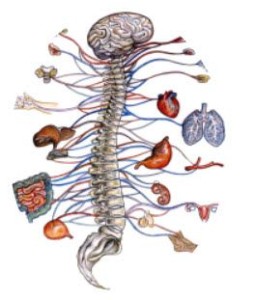Do You Really Want To Be Healthy?
There is an old saying, “Everybody wants to go to heaven but nobody wants to die to get there.” 
A similar statement could be made concerning health. In almost any survey taken asking people what they wanted most out of life, good health is one of the top three things on the list.
The only two things that ever top it are usually happiness and good family relationships. Yet how many of us allow other less important things to keep us from attaining maximum health?
Like happiness, health does not come by luck. It is true that hereditary factors are important to good health but most people can be healthy in spite of hereditary weakness. Conversely, hereditary strengths will not overcome a failure to take care of yourself.
A Desire to be Healthy
Most people who come into a chiropractic office indicate a desire to be healthy. Unfortunately, t hey often do not realize that it will take some effort on their part.
hey often do not realize that it will take some effort on their part.
The average person’s experience with medicine has led them to believe that they will be made healthy by what the doctor does to them or what he gives them. They can just sit back, do nothing or at most, remember to take their medication every four hours.
While this approach may be “relatively effective” in the treatment of disease, it has virtually nothing to do with health. For the most part, disease treatment is a passive activity. Health maintenance, or health restoration, is largely an active endeavor. Therein lies the problem.
Sitting back and doing nothing will not promote or maintain health.
Hoping or wishing for it will not make it happen. It must be actively pursued. A choice must be made. Good, nutritious, health-promoting food is available, but then so is junk food. You must make the decision as to what kind you are going to eat and then make the extra effort to get it. Exercise is not a passive activity. You cannot get it by just watching PX90 videos.
Chiropractic is not a passive activity either.
While it is true the patient lies on the table and relaxes, it is the body that makes the adjustment. The chiropractor introduces a force to the spine and the body’s muscles actively move the bone to exactly where it belongs. Further, the benefits of chiropractic care occur after the adjustment, like exercise and eating, they are far reaching and unlike treatments, they are not designed for short-term, immediate effects. It is true you may feel good after eating a good meal or after a good work out. You may also feel good right after a chiropractic adjustment, but the real benefits are the long-term ones. When the body is working better it can actively promote health and well-being and add years to life.
The patient must make the commitment to care.
There is another aspect that makes chiropractic care an active approach. The patient must make the commitment to care. The chiropractor cannot give you a bottle of adjustments and say, “take one every Monday, Wednesday and Friday for the next six weeks.”
The patient must make the willful decision to come in, be regular and follow the program. The chiropractor cannot follow you around or take you by the hand.
Do you really want to be healthy?
Sadly, too many people do not want to pay the price, which is time, money and effort. Happiness does not come by accident. Fame and fortune are not a matter of luck. Similarly, you cannot expect to have good health unless you do those things necessary to attain it. Every individual has to establish his or her priorities. Is watching television more important than exercising for your health? Is saving money by eating poor quality food more important to you than spending the few dollars for good food? Is doing whatever you do that interferes with regular adjustments more important than your health? Only you can answer these questions and how you decide on these and other relative questions could very well determine your health, your happiness and your life.

















